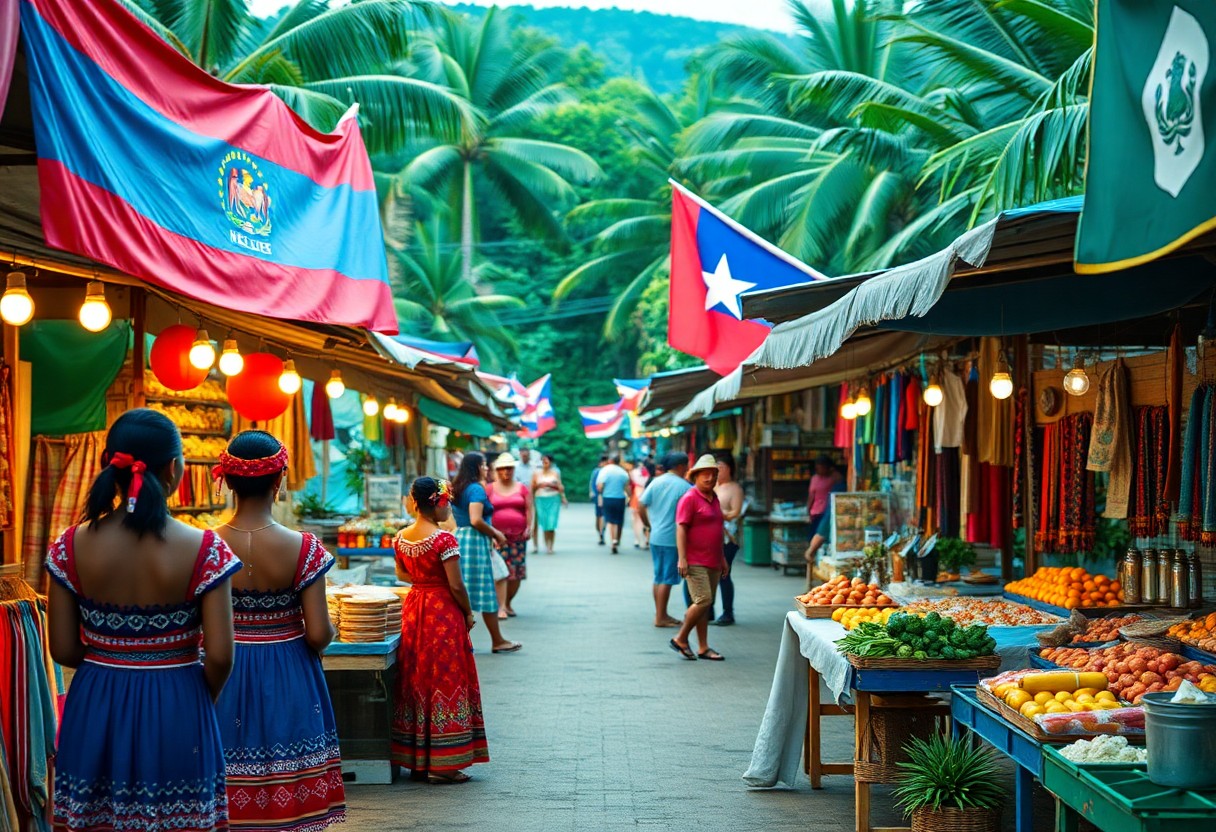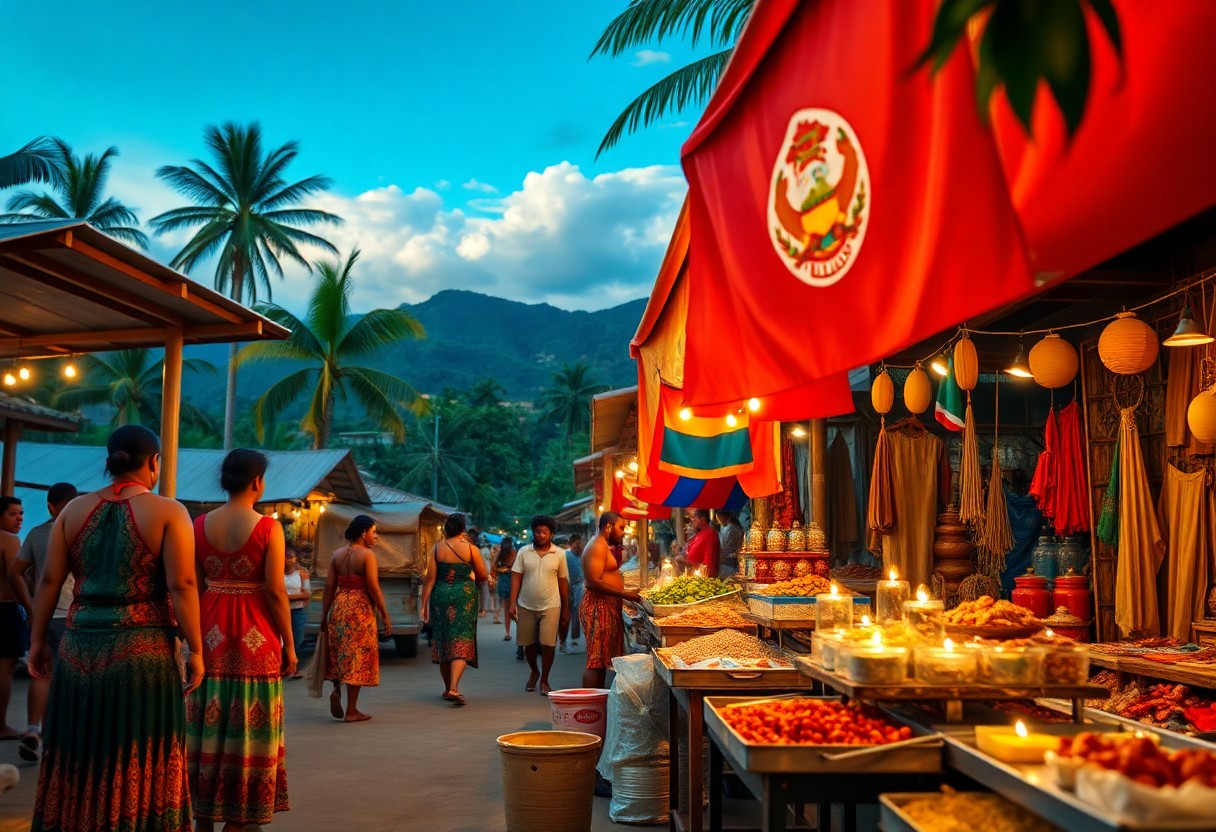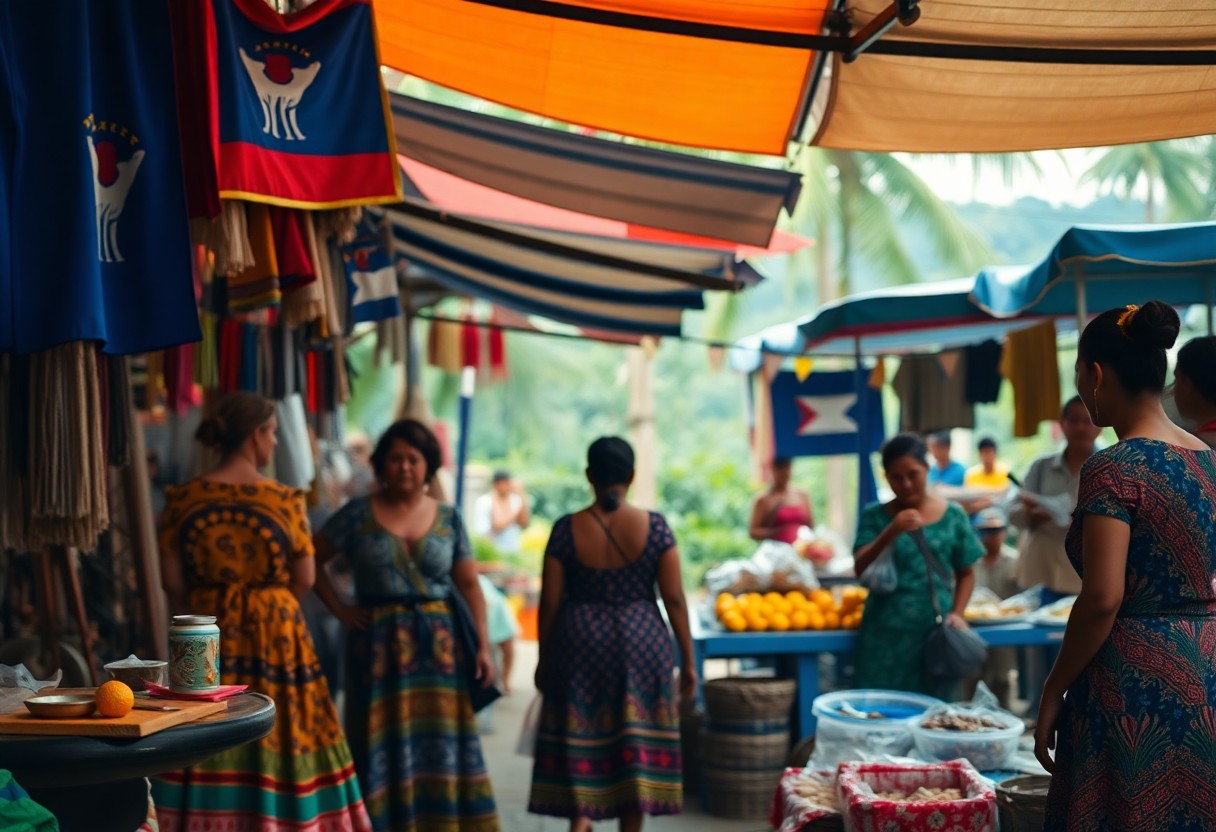The cultural landscape shared between Belize and Honduras is rich and captivating, often surprising those who delve deeper into their histories. As neighboring nations in Central America, they possess unique historical connections and distinctive characteristics that play a crucial role in shaping their national identities. Both countries have been influenced by Spanish colonialism, yet Belize stands out due to its remarkable English-speaking heritage, which sets it apart from its neighbor. Exploring these vibrant countries reveals a complex linguistic and ethnic diversity, featuring indigenous populations, lively Garifuna communities, and a blend of cultural heritages that contribute to their rich social fabric. By understanding their nuanced differences, you can gain valuable insights into the dynamic cultural interactions within Central America.
Explore the Distinctive Geography and Border Relationships of Belize and Honduras
Diving into the geographical features of Belize and Honduras reveals two neighboring nations with fascinating territorial attributes. Their strategic positioning in Central America offers a unique perspective on the region’s diversity, showcasing distinct coastal and inland terrains that significantly influence their national identities and environmental characteristics. Each country is adorned with unique geographic elements, from verdant jungles to breathtaking beaches, enhancing their natural allure while also playing pivotal roles in cultural practices and economic activities.
Uncover the Coastal Marvels and Proximity of Belize and Honduras
Set against the vibrant backdrop of the Caribbean Sea, Belize and Honduras feature a maritime border that showcases stunning coastal landscapes. Belize is celebrated for its awe-inspiring 386-kilometer coastline, adorned with numerous coral reefs and thriving marine ecosystems, attracting nature enthusiasts and adventure seekers alike. Conversely, Honduras boasts an impressive 820 kilometers of Caribbean shoreline, presenting a variety of diverse marine habitats ripe for exploration. This shared coastal ecosystem not only offers breathtaking views but also underscores the critical need for marine conservation initiatives in both countries.
Examining Land Borders and Their Influence on Regional Relations
The coastal boundaries serve as a defining aspect of their territorial interactions, with Belize and Honduras strategically situated within Central America. Belize is bordered by Guatemala to the west and south, while Honduras lies to the southeast, creating a complex geopolitical landscape that influences regional dynamics and cultural exchanges. This geographical positioning fosters opportunities for trade and cooperation while simultaneously presenting challenges related to border management and security.
Moreover, the land borders transcend mere administrative divisions; they embody significant historical and political narratives. The ongoing territorial dispute between Guatemala and Belize epitomizes notable geopolitical tensions, with unresolved claims that could impact regional stability. These border complexities reflect deep-rooted historical colonial legacies and ongoing diplomatic negotiations, highlighting the intricate relationships and interactions among these Central American nations.

Dive into the Language and Ethnic Diversity of Belize and Honduras
As you explore the intriguing linguistic and ethnic landscapes of Belize and Honduras, you will discover that cultural diversity plays an essential role in shaping national identities. The interplay of languages and ethnic groups reveals complex historical narratives that define these Central American nations, providing you with valuable insights into their rich social fabric. This exploration of language and ethnicity unveils how historical migrations and colonial influences have crafted unique identities within each country.
Comparing Official Languages: English in Belize vs. Spanish in Honduras
One of the most striking differences between these nations is their choice of official languages; Belize proudly identifies itself with English as its official language, whereas Honduras primarily communicates in Spanish. This linguistic distinction is deeply rooted in their colonial histories, with Belize maintaining its British colonial heritage while Honduras reflects the influences of Spanish imperialism. Understanding these language dynamics not only highlights their distinct cultural backgrounds but also facilitates effective communication and social interactions in each respective country.
Rich Ethnic Composition and Cultural Heritage in Both Nations
At the core of both countries lies a rich ethnic diversity. Belize boasts a dynamic mix of Creole, Garifuna, Maya, and Mestizo populations, while Honduras showcases similar yet uniquely composed ethnic groups. You will recognize how these diverse communities contribute to the rich cultural tapestry of each nation, displaying an array of traditions, artistic expressions, and social practices.
Additionally, beyond their visible diversity, it is crucial to appreciate that each ethnic group carries deep historical significance. The descendants of the Maya in both nations diligently preserve ancient customs, while Garifuna communities maintain unique cultural practices that have endured over generations. It is essential to acknowledge how these ethnic groups have historically resisted cultural erasure, successfully retaining their languages, rituals, and social structures despite significant external pressures.

Experience the Tourism Highlights of Belize and Honduras
The tourism sectors of Belize and Honduras offer unique experiences that attract global travelers in search of diverse adventures. Both countries feature stunning natural landscapes, rich marine environments, and culturally significant heritage sites, providing compelling reasons to explore their territories. Belize’s tourism industry focuses on eco-adventures and marine attractions, while Honduras emphasizes its archaeological sites and breathtaking coastal destinations. Each destination presents travelers with distinctive opportunities to immerse themselves in the beauty of Central America through various lenses and experiences.
Uncover the Wonders of the Belize Barrier Reef
Without a doubt, the most spectacular marine attraction in Belize is the Belize Barrier Reef, which stretches approximately 190 miles along the coastline. This UNESCO World Heritage site offers unmatched snorkeling and diving opportunities that create unforgettable experiences. The reef is home to an astonishing array of marine life, including vibrant coral formations, diverse tropical fish, and endangered species like manatees and sea turtles, making it a paradise for marine enthusiasts and eco-tourists alike.
Exploring the Enchanting Bay Islands of Honduras
To uncover Honduras’s maritime treasures, you should delve into the enchanting Bay Islands. These Caribbean islands offer world-class diving opportunities and pristine beaches that are perfect for relaxation and exploration. Roatán, the largest island, captivates visitors with its vibrant marine ecosystem and laid-back atmosphere, making it a favored destination for travelers seeking both adventure and leisure.
Due to their strategic location, the Bay Islands boast exceptional marine biodiversity. You will have the chance to experience the world’s second-largest barrier reef system, positioning it as a premier destination for underwater enthusiasts. The islands showcase a unique cultural blend, influenced by indigenous, Garifuna, and international communities. However, potential risks such as strong currents and marine wildlife exist, so it is crucial to engage with professional guides and heed safety recommendations when exploring these stunning maritime environments.

Analyzing the Economic Landscapes of Belize and Honduras
It is essential to acknowledge that Belize and Honduras share complex economic landscapes, each presenting distinct challenges and opportunities. Belize’s economy is relatively smaller and predominantly service-oriented, while Honduras relies significantly on agricultural exports. Both nations face vulnerabilities in their economic frameworks, characterized by limited diversification and dependence on external markets. You will find that their GDP structures reflect historical colonial influences as well as current global economic pressures, creating intertwined yet uniquely challenging economic trajectories.
Key Industries and Trade Relationships of Belize and Honduras
With agriculture, manufacturing, and services forming the backbone of both economies, you will observe notable disparities in their industrial compositions. Belize excels in producing and exporting sugar, bananas, and citrus fruits, while Honduras leads in coffee and textile production. Understanding their trade dynamics reveals the United States as a primary trading partner for both nations, alongside emerging relationships in regional markets such as CARICOM and Central American economic zones that enhance their trade opportunities.
The Role of Tourism as a Critical Economic Force in Both Countries
Behind the economic curtain, tourism emerges as a vital economic driver for both Belize and Honduras. You’ll discover that Belize’s tourism sector contributes a more substantial percentage to its GDP compared to Honduras, with eco-tourism and marine attractions playing pivotal roles in attracting international visitors. Analyzing the contributions of tourism reveals the transformative potential it holds for the economies of both nations.
Tourism serves as an essential economic force for both countries. Belize’s tourism industry generates approximately 40% of its GDP, focusing on marine ecosystems, Mayan archaeological sites, and pristine coastal environments that draw travelers from around the world. In contrast, you will find Honduras developing similar strategies, leveraging its archaeological heritage and Caribbean coastlines. The tourism sector not only provides direct employment opportunities but also stimulates ancillary economic activities, paving the way for sustainable economic development in both nations.
Debunking Myths vs. Reality in Belize and Honduras
Not every narrative surrounding Belize and Honduras aligns with the actual experiences of those who visit. Your understanding of these countries may be shaped by outdated stereotypes or limited information. Media representations often distort the nuanced cultural landscape of these Central American nations, frequently presenting oversimplified narratives that fail to encompass the complex realities of daily life, social dynamics, and the cultural richness present in both countries.
Addressing Safety Concerns and Common Misconceptions
When considering travel to these nations, perceptions of safety can vary significantly from the realities on the ground. While Honduras may exhibit higher crime rates, Belize is often characterized by relatively safer urban and tourist environments. You will find that specific regions within both countries display varying levels of safety, and smart traveler precautions can greatly mitigate potential risks, allowing for a rewarding travel experience.
Understanding Cost of Living and Travel Expectations in Both Nations
Across Central America, you may find your budget expectations surprisingly accommodating. Belize tends to be pricier, mainly due to its developed tourism infrastructure and English-speaking environment, whereas Honduras generally offers more affordable living and travel experiences. Local economic conditions significantly influence pricing structures, and comprehending these differences will aid in effectively planning your visit.
The perception of travel expenses in Belize and Honduras unveils intriguing economic contrasts. Belize’s higher costs are primarily attributed to its developed tourism sector and international accessibility. You will likely find accommodation, dining, and transportation options in Belize priced at premium rates compared to Honduras, where your daily expenses might range from $30 to $80, depending on your travel style and chosen destinations. In contrast, a visit to Belize could range from $50 to $150 per day, reflecting the varying economic landscapes.
Exploring Culinary Traditions Across Belize and Honduras
As you navigate the culinary landscapes of Belize and Honduras, you will uncover fascinating culinary connections alongside unique distinctions. Both countries exhibit Caribbean and Latin American influences, culminating in vibrant food cultures that reflect their rich historical backgrounds. While Belizean cuisine showcases a broader multicultural diversity, Honduran gastronomy maintains stronger ties to indigenous roots, offering you a delectable journey through regional flavors and traditional cooking techniques that define each nation’s culinary identity.
Influences Shaping the Unique Flavors of Belizean Cuisine
The traditions of Belizean cooking emerge from a remarkable cultural melting pot, integrating elements from Creole, Garifuna, Maya, and European culinary practices. You’ll find your plate enriched with ingredients and techniques that reflect Mayan agricultural heritage, British colonial contributions, and African cooking methods, creating a uniquely diverse gastronomic experience that sets Belize apart in the realm of Central American cuisine.
Honduran Gastronomy: A Rich Taste of Tradition
Rooted in Honduras’s culinary identity is a robust agricultural tradition that significantly shapes your dining experience. You’ll encounter meals characterized by staples such as corn, beans, and locally sourced proteins, reflecting the profound influences of indigenous Maya traditions as well as Spanish colonial legacies that have intricately structured Honduran food culture over the centuries.
Moreover, Honduran cuisine offers you remarkable regional variations. Coastal areas are known for their abundant seafood dishes, while mountainous regions specialize in hearty meat-based preparations. Signature dishes like baleadas (wheat tortillas filled with beans, cheese, and cream) and pastelitos (savory pastries filled with meat) exemplify the nation’s culinary complexity and provide a tantalizing glimpse into Honduras’s rich gastronomic heritage.
In summary, as you explore the cultural landscapes of Belize and Honduras, you will uncover a fascinating tapestry of shared heritage alongside distinct identities. It becomes evident that while both nations are united by their Caribbean roots and Spanish colonial influences, Belize stands out due to its unique English-speaking background and diverse ethnic composition. Your exploration of these countries reveals nuanced differences in language, traditions, and social structures that make each nation significant in its own right. By examining their historical trajectories and cultural dynamics, you will gain insights into how geographical proximity does not always equate to cultural uniformity. Your journey highlights the rich complexity of Central American societies and their vibrant, evolving identities.
Frequently Asked Questions About Belize and Honduras
What are the primary linguistic differences between Belize and Honduras?
Belize stands apart as an English-speaking nation, with English serving as its official language, while Honduras primarily communicates in Spanish. This linguistic distinction arises from Belize’s British colonial history, whereas Honduras developed under Spanish colonial influence. The difference in language significantly impacts communication, education, and cultural interactions in both countries, shaping the social landscape.
How do the ethnic compositions of Belize and Honduras compare?
Belize showcases remarkable ethnic diversity, with a population comprised of Creole, Garifuna, Mestizo, Maya, and other groups. In contrast, Honduras has a more homogeneous population, predominantly consisting of Mestizo individuals. Belize’s multicultural landscape reflects its unique historical migrations and colonial experiences, resulting in a more diverse social fabric compared to Honduras’s more uniform ethnic structure.
What economic factors differentiate Belize from Honduras?
Belize possesses a smaller yet more tourism-oriented economy, generating significant income from marine tourism, agricultural exports like sugar, and offshore financial services. In contrast, Honduras relies more heavily on agricultural exports, such as coffee and bananas, with a larger agricultural sector and lower per capita income. Belize’s economic model emphasizes service industries and international tourism, while Honduras maintains a more traditional agriculture and manufacturing-based economic approach.
The Article Belize vs. Honduras: Cultural Similarities and Key Differences appeared first on Belize Travel Guide
The Article Belize vs. Honduras: Exploring Cultural Similarities and Differences Was Found On https://limitsofstrategy.com





Comments are closed